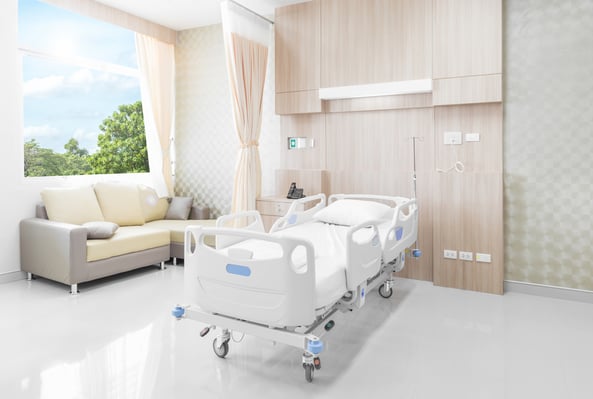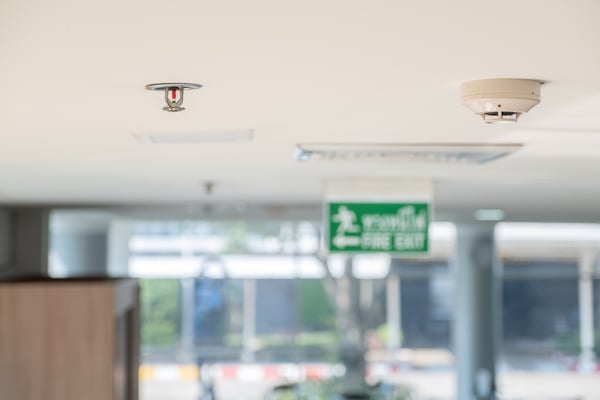Mechanical, electrical and hydraulic systems play an important role in the built environment, as they support an environment suitable for human occupation. However, the healthcare sector brings additional challenges as there are recovering patients and many types of specialized equipment. For example, an electrical failure may only disrupt an office, but it can disable life support equipment in a hospital.
Due to the additional requirements of healthcare facilities, MEP Facilities tend to be more expensive than other buildings. Although the exact distribution of costs varies by project, these systems will typically represent more than 40% of the healthcare building budget. However, experienced MEP engineers can find ways to cut costs without affecting performance.
Are you in charge of a healthcare construction project? Reduce costs and increase performance with a professional MEP design.
As with any construction project, an optimized layout is cheaper simply because it uses fewer materials. However, MEPs' coordination for health brings additional challenges, as there are medical equipment with specific requirements. Additionally, building systems must create the best possible environment for patient recovery.
In healthcare projects, the engineering team responsible for designing and coordinating the MEP must have specialized knowledge to deliver the best possible results. By hiring professional engineers for the design phase, project owners can save valuable time and resources during construction.
The role of HVAC systems in healthcare buildings

In most residential and commercial buildings, the function of HVAC Systems is to maintain a comfortable temperature and humidity while preserving indoor air quality. However, the role of HVAC is much more important in healthcare:
- Ventilation systems must provide sufficient airflow to all areas of the facility, but must also prevent the spread of infectious diseases. For example, there is evidence that COVID-19 can spread through the air. This poses a serious threat in a hospital where patients are recovering from other conditions.
- Some areas of healthcare facilities have strict requirements for humidity control. Depending on the climate zone and season, dehumidification or humidification systems may be necessary.
- Steam is required in many healthcare applications, introducing an additional system to the MEP design and coordination process.
These are just a few examples of additional MEP requirements for the healthcare sector. Design engineers must meet all specifications provided in building codes and customer documentation, optimizing project costs and improving energy efficiency.
Healthcare facilities require a wide range of tools and equipment for research and testing. They purchase them from reputable medical supply manufacturers like KNF USA. Laboratory pumps and systems must be maintained at optimal temperatures to ensure accurate results at all times. The same applies to other healthcare tools, devices and equipment. Otherwise, instruments will experience static buildup, measurement challenges, and calibration errors, and samples may harbor contaminants.
The Food and Drug Administration (FDA) recommends 68° to 77° Fahrenheit as the ideal temperature for laboratories with 30% to 50% humidity. Therefore, a good MEP design for healthcare laboratories must comply with this FDA guideline to avoid data inaccuracies in test results. The design and installation of HVAC systems in healthcare laboratories and testing areas must consider similar compliance, health and safety guidelines from the FDA and other regulatory boards.
HVAC systems must also create a comfortable environment. This covers aspects such as temperature and humidity, but also noise and air speed. When HVAC systems produce drafts and noise, the environment will be uncomfortable even at the ideal temperature and relative humidity. This is unacceptable in healthcare buildings, especially in areas such as patient rooms and operating rooms. In many cases, poor HVAC design can even delay recovery.
Brightness of lighting systems is another aspect of comfort that is often overlooked, and this doesn't just apply to healthcare. Architects and engineers must deliver a lighting design that does not cause visual discomfort to patients and healthcare personnel. This involves an appropriate selection of luminaires and also a layout that provides uniform, glare-free lighting.
Fire Protection and Emergency Power in Healthcare Buildings

Fire protection and emergency power systems are important in any building, but the healthcare sector brings additional challenges, as does HVAC design. Healthcare facilities often have occupants who are unable to evacuate on their own, which creates an additional challenge during emergencies. Therefore, MEP systems activated during an emergency must be as reliable as possible.
There is zero tolerance for failure when dealing with fire protection systems . A smoke alarm that fails to activate can waste valuable minutes that could be used to evacuate the building, and a sprinkler system that fails to activate can allow a fire to spread beyond control. However, fire protection engineers must consider the presence of patients and medical personnel in healthcare buildings.
- Sprinkler systems and other fire protection measures must be highly reliable without creating risks to patients.
- For example, there are critical surgeries that cannot be interrupted and any fire protection measures present must be designed to prevent interruptions.
Having a reliable emergency power system is also critical in healthcare, as many types of medical equipment run on electricity. Even a few seconds of power interruption can have serious consequences, especially when patients depend on life support equipment.
Many hospitals use generators as backup power. Diesel generators are a highly efficient and popular power backup for hospitals and other medical facilities. Mobile generators serve as supplements when the primary power supply backup fails or is scheduled for repair.
Some hospitals prefer to use low-emission gas generators that use natural gas. Because distribution systems are now available, hospitals can benefit from continuous operations without the need for fuel.
Conclusion
The MEP design and coordination phase impacts the entire life cycle of a project. When building systems have an ideal layout, their installation can be completed with minimal disruption. A high-performance MEP design can also reduce operation and maintenance costs over time. These are valuable features in any building project, but especially in the healthcare sector, where initial investment and operating costs are very high.
The healthcare sector brings additional design challenges. For example, many problems that only disturb other buildings can be fatal in a hospital. Working with MEP engineers who are experienced in healthcare buildings is strongly recommended.

